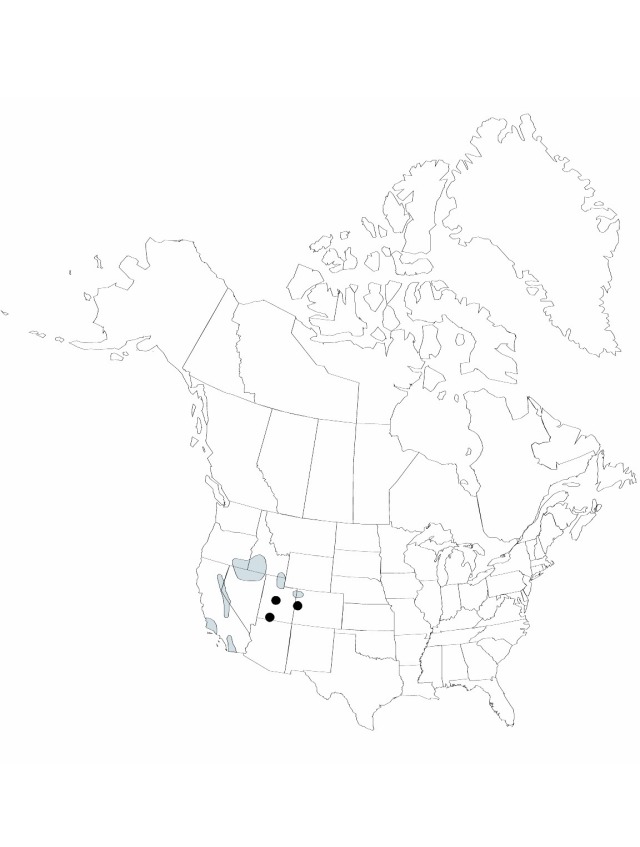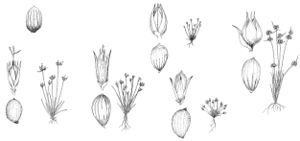Juncus bryoides
Leaflets of Western Botany 5: 117. 1948.
Herbs, annual, cespitose, 0.03–0.25 dm. Culms to 150, 0.1–0.2 mm wide. Leaves to 0.9 cm, 1/4–1 times height of plant. Inflorescences terminal solitary flowers; bracts subtending inflorescence (1–)2, ovate, inconspicuous, 0.3–0.9 mm, membranous, apex acute. Flowers 3-merous; : tepals (4–)6(–8), turning inward to enwrap shorter capsule at maturity, chestnut brown to black, lanceolate to oblong, 1.2–2.3(–2.8) × 0.4–0.6 mm; ; outer and inner series nearly equal, acute to acuminate; stamens 3, filaments 0.3–0.6 mm, anthers 0.15–0.25 mm; style 0.1 mm, stigma 0.2–0.3 mm. Capsules pale reddish, 3-locular, ovoid to ellipsoid, 1–1.9 mm × 0.5–1 mm. Seeds ovoid to globose, 0.3–0.5 mm. 2n = ca. 38.
Phenology: Flowering and fruiting spring–mid summer.
Habitat: Usually fine, sandy soil of washes, swales in meadows, and seepage areas on rock outcrops
Elevation: 600–3600 m
Distribution

Calif., Colo., Idaho, Nev., Oreg., Utah, Mexico.
Discussion
Selected References
None.
